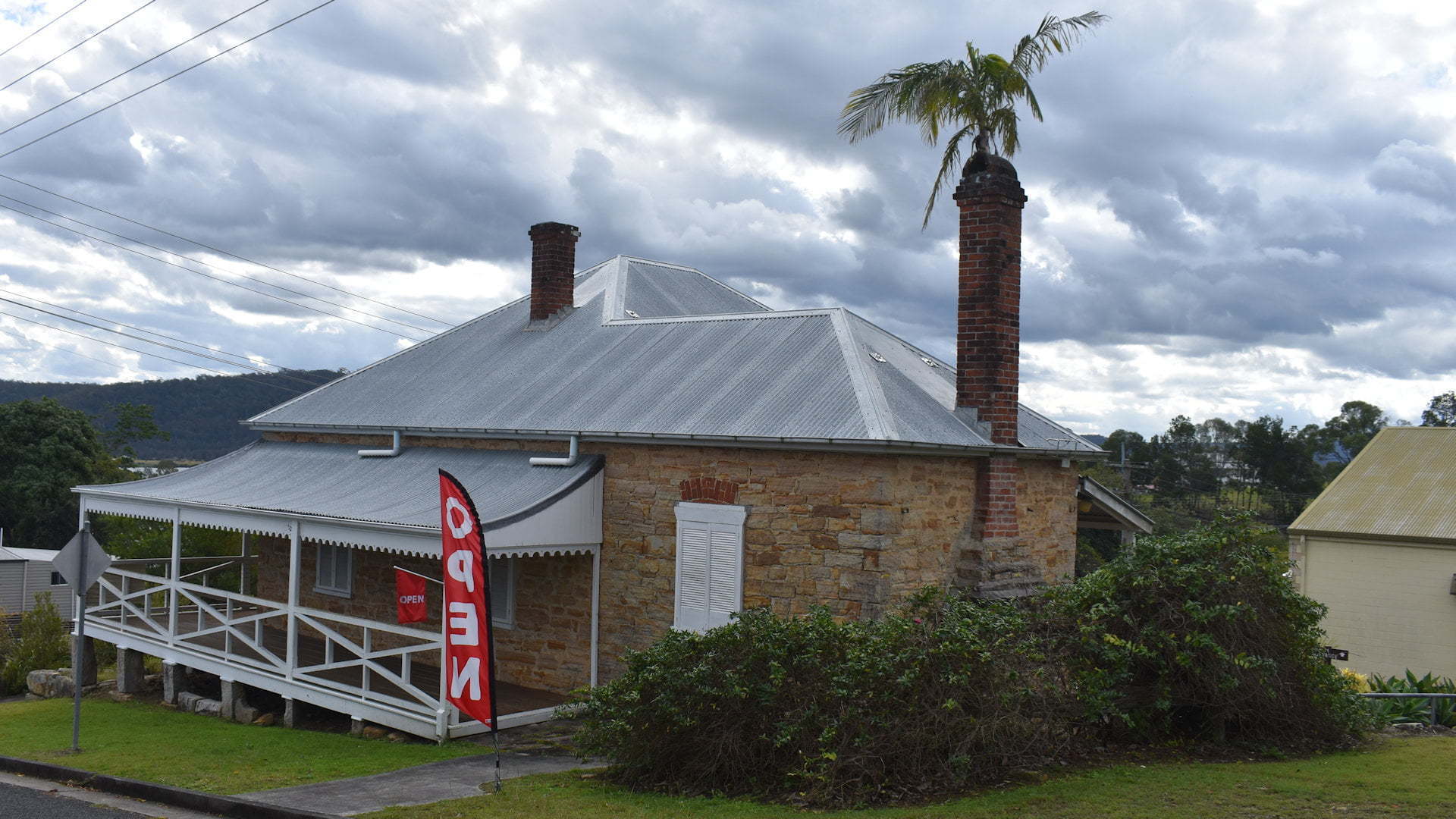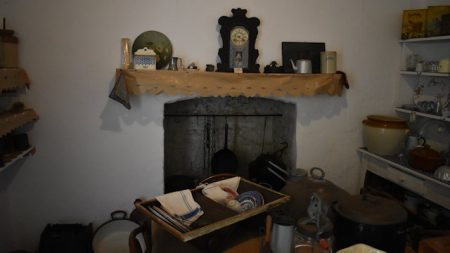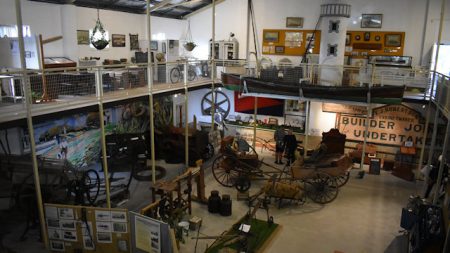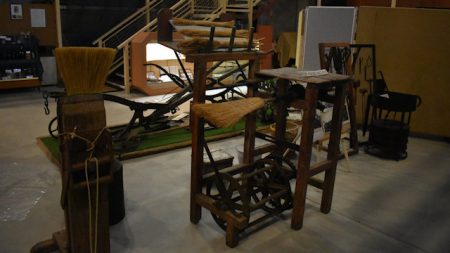
The Stone Cottage Museum started when the cottage was resumed by the council in 1969 for non-payment of rates and given to the historical society in 1973 for use as a museum for Maclean.
In 1988, funding through a grant and loans was provided to build the new building as part of the bicentennial, which is now the main museum building. It is now called the Maclean Bicentennial Museum and Stone Cottage but the brown signs still display the original name.
The stone cottage was constructed in 1889, taking Johann Schaefer 10 years to build using stone quarried from the site it is built. It has 5 rooms with displays of furnishings and memorabilia from the earlier days in Maclean when the stone cottage was built. The 5 rooms are a parlour, music room, bedroom, children’s bedroom, and kitchen.

I love these sandstone cottages. They have a character about them, not just the outside but also inside with beautiful wooden fixtures and simple structures. The thick walls, including the inner walls, hold out the heat during the summer, noticeably cooler when you walk in.
The cottage was given a major restoration in 2013 with a new roof and verandah. The stone walls were repointed, which is where the decaying or crumbling mortar between the stones is repaired or replaced.
The newer building has much more space than the little stone cottage has. It allows for larger displays and bigger items in the museum’s collection.

The entry to the museum is on the upper mezzanine floor where you pay a very reasonable entry fee. Numerous displays are around the perimeter of the building on the mezzanine floor. Displays include a school room, WW1, hospital, and Aboriginal memorabilia.
Maclean being on the Clarence River and close to Yamba and Iluka, maritime is one of the key themes presented. There is information about the “The Susan”, a 52 ton schooner that is believed to have come up the Clarence in 1838 in search of cedar told of being up the ‘big river’.
Naturally, being Maclean, the museum has information about the Scottish culture of Maclean and why Maclean is the “Scottish Town Of Australia”. A figure is dressed with the Cameron tartan kilt, provided by Alistair Cameron, and other items of dress and belongings from Scottish families.
Scottish history and culture can be found throughout Maclean. You can’t miss the Tartan Poles in the streets of Maclean ![]() with hundreds painted with various tartan colours. We found the Menzies hunting tartan in Maclean, the Scottish family name from my maternal grandmother, which is located further up the street from the Stone Cottage.
with hundreds painted with various tartan colours. We found the Menzies hunting tartan in Maclean, the Scottish family name from my maternal grandmother, which is located further up the street from the Stone Cottage.
The lower floor has most of the larger artefacts on display such as farming equipment and tools from the timber industry.

Aside from locally unique items, many museums have similar artefacts on display. I have found though, most museums have something you haven’t seen before and takes the attention of your interest. Seeing a straw broom making machine was the unique item found for me at this visit.
The machine on display is from a broom factory from the Lower Clarence region. Broom making was established in the early 1900s or earlier by Albert Marsh. Building sheds to protect the millet from bad weather and dry out properly, he made first class products winning prizes in a number of shows.
The volunteers in the museum are really helpful and will answer any questions if they are able to. The volunteers can also be found at the Scottish Visitor Information Centre in the main street on the eastern end of Maclean, where they found the Menzies tartan pole is for us and other Scottish information, one of they found out inbetween for us and handed it to us when we went to the museum later in the day.
To get there

From the Pacific Hwy, take the Yamba Rd exit for Maclean. Turn left (west along the Clarence River) and from the brown sign for Tourist Drive 22, follow Yamba Rd for 5km. Passing the pedestrian crossing at Woolitji House on the left, continue through the main shopping street in Maclean for another 300m to a roundabout. Continue straight ahead through the roundabout, then turn the next left into Wharf St. Follow Wharf St for 500m with the Stone Cottage Museum on the left corner of Grafton St. Turn left into Grafton St with parking on the right next to the museum.


